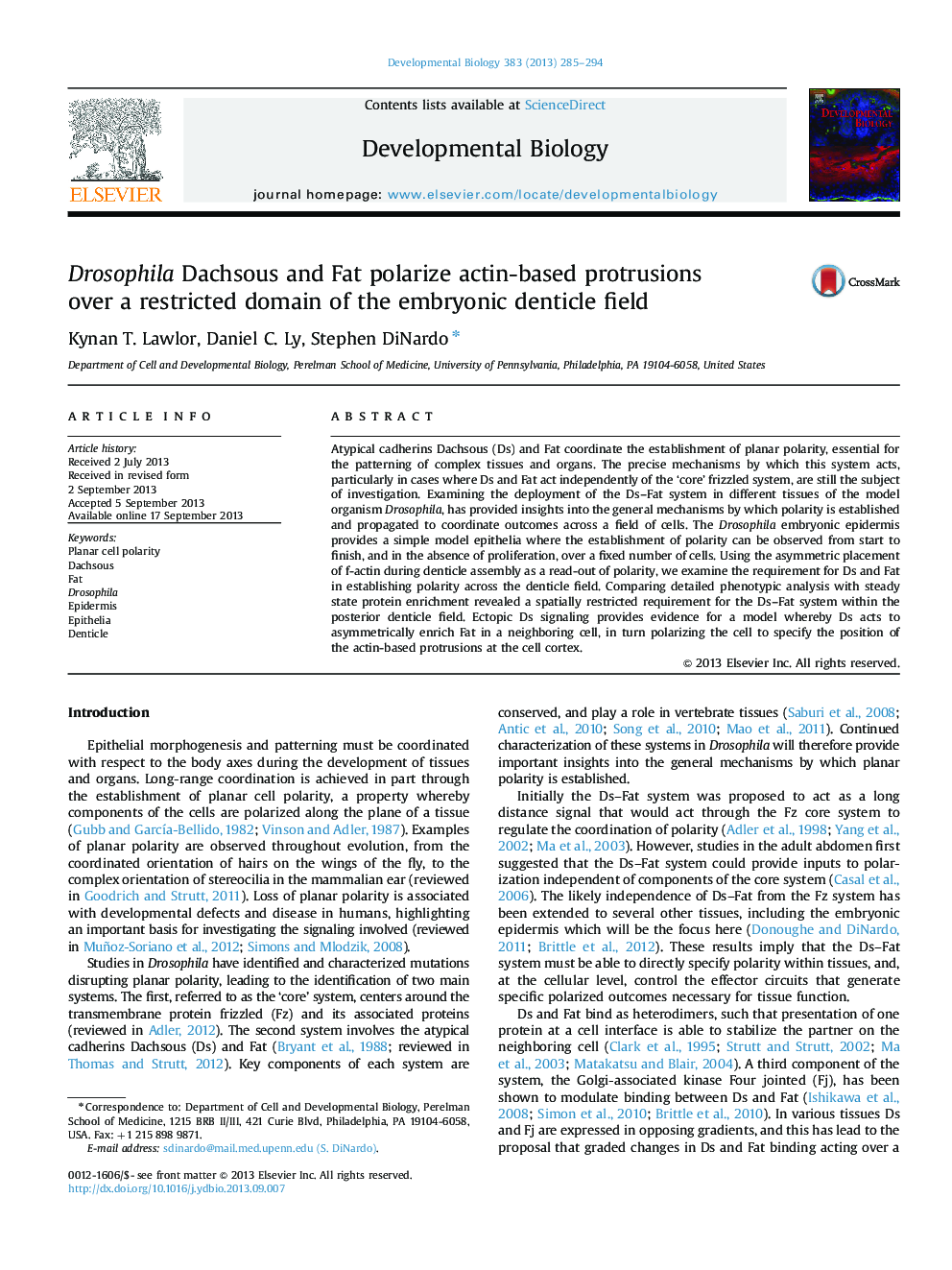| Article ID | Journal | Published Year | Pages | File Type |
|---|---|---|---|---|
| 2173043 | Developmental Biology | 2013 | 10 Pages |
•Epidermal planar polarity is controlled by atypical cadherins Dachsous and Fat.•Actin-based protrusions are positioned at posterior cell edges.•A boundary that initiates asymmetric Ds–Fat signaling may govern polarization.•Ds–Fat and the frizzled polarizing system have independent inputs to polarity.
Atypical cadherins Dachsous (Ds) and Fat coordinate the establishment of planar polarity, essential for the patterning of complex tissues and organs. The precise mechanisms by which this system acts, particularly in cases where Ds and Fat act independently of the ‘core’ frizzled system, are still the subject of investigation. Examining the deployment of the Ds–Fat system in different tissues of the model organism Drosophila, has provided insights into the general mechanisms by which polarity is established and propagated to coordinate outcomes across a field of cells. The Drosophila embryonic epidermis provides a simple model epithelia where the establishment of polarity can be observed from start to finish, and in the absence of proliferation, over a fixed number of cells. Using the asymmetric placement of f-actin during denticle assembly as a read-out of polarity, we examine the requirement for Ds and Fat in establishing polarity across the denticle field. Comparing detailed phenotypic analysis with steady state protein enrichment revealed a spatially restricted requirement for the Ds–Fat system within the posterior denticle field. Ectopic Ds signaling provides evidence for a model whereby Ds acts to asymmetrically enrich Fat in a neighboring cell, in turn polarizing the cell to specify the position of the actin-based protrusions at the cell cortex.
